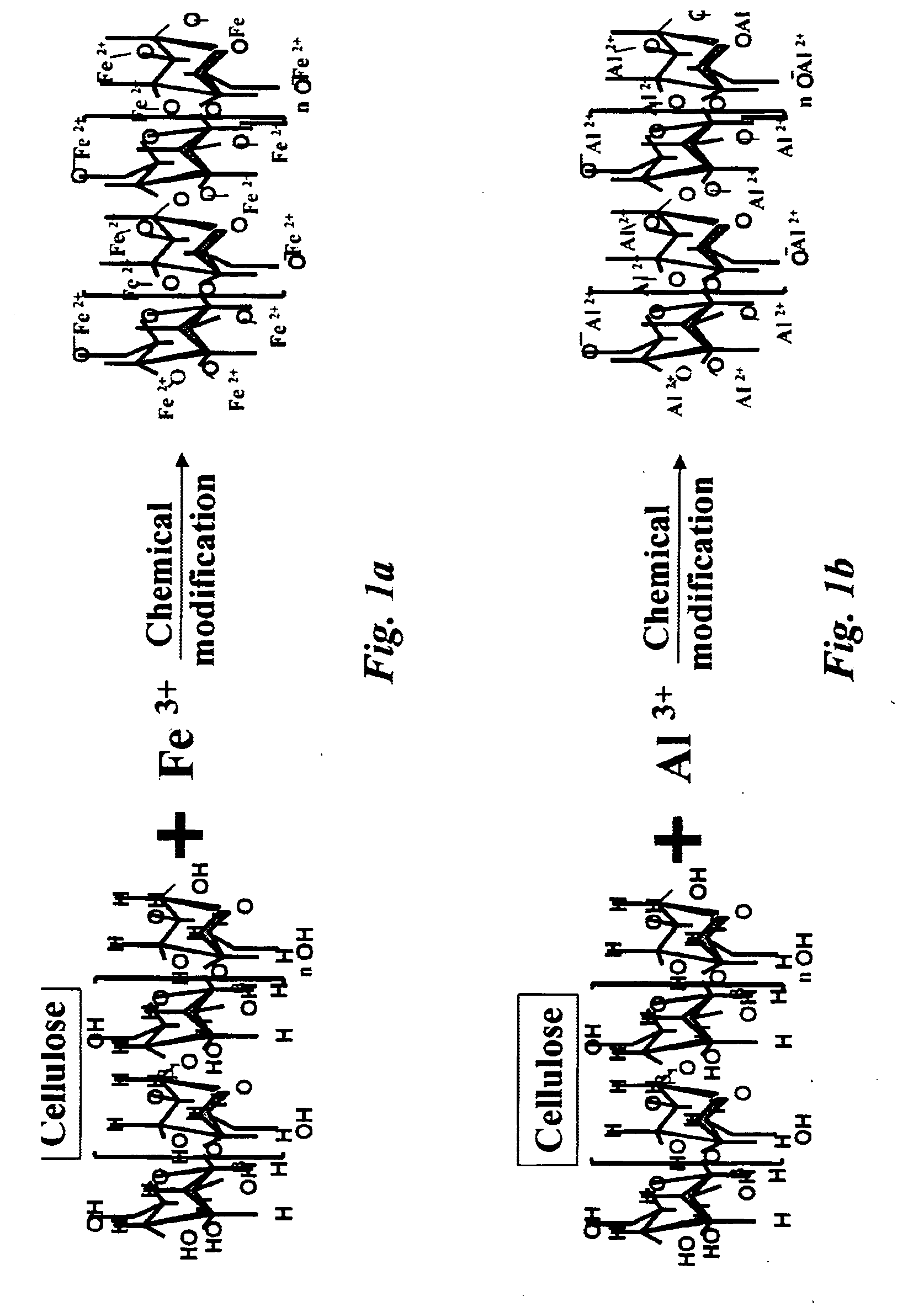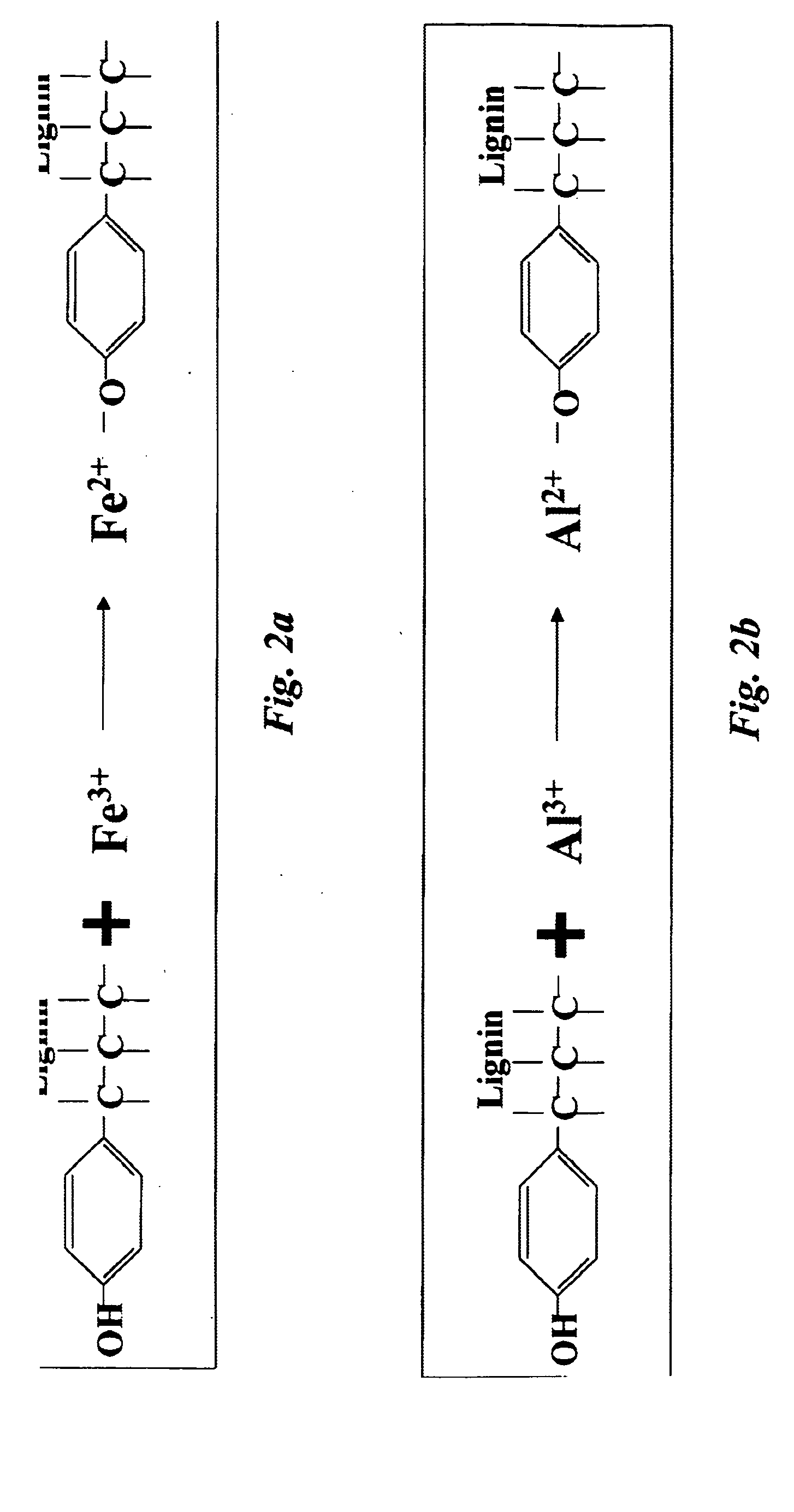Lignocellulose-based anion-adsorbing medium (LAM) and process for making and using same for the selective removal of phosphate and arsenic anionic contaminants from aqueous solutions.
a technology of anion adsorption and lignocellulose, which is applied in the direction of quarries, other chemical processes, waste water treatment, etc., can solve the problems of significant environmental and health problems, undesirable biological effects, and the threat to human health and life of animals, plants, and humans when consumed with arsenic in groundwater and mine wastewater, so as to reduce the content of anionic contaminants
- Summary
- Abstract
- Description
- Claims
- Application Information
AI Technical Summary
Problems solved by technology
Method used
Image
Examples
Embodiment Construction
[0025] Overview.
[0026] The composition of the present invention is a lignocellulose-based anion-adsorbing medium (LAM) that can be used to remove anionic contaminants such as phosphate, arsenic or the like from aqueous solutions in a highly efficient and cost-effective manner. The capacity of the LAM, i.e. the amount of contaminant removed per mass of media, exceeds that of existing technologies. The efficiency of removal, i.e. the level to which contaminants' concentrations can be lowered, is superior to competing technologies. Sludge is not produced. The LAM can be regenerated and reused multiple times. Further, the LAM is manufactured by a simple and inexpensive process from lignocellulose, a safe and harmless natural material that is readily available at a very low cost.
[0027] The present invention discloses a process for making the LAM such that it will effectively and selectively remove anionic contaminants (e.g., phosphate and arsenate) from aqueous solutions (e.g., drinkin...
PUM
| Property | Measurement | Unit |
|---|---|---|
| molar concentration | aaaaa | aaaaa |
| diameter | aaaaa | aaaaa |
| diameter | aaaaa | aaaaa |
Abstract
Description
Claims
Application Information
 Login to View More
Login to View More - R&D
- Intellectual Property
- Life Sciences
- Materials
- Tech Scout
- Unparalleled Data Quality
- Higher Quality Content
- 60% Fewer Hallucinations
Browse by: Latest US Patents, China's latest patents, Technical Efficacy Thesaurus, Application Domain, Technology Topic, Popular Technical Reports.
© 2025 PatSnap. All rights reserved.Legal|Privacy policy|Modern Slavery Act Transparency Statement|Sitemap|About US| Contact US: help@patsnap.com



